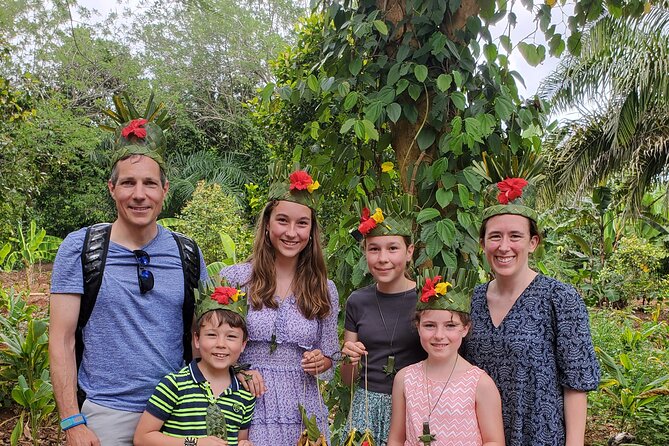Combine visit to spice farm & Stone Town’s historical tour
What’s Included
- Transportation from Stone town
- Professional guide
- Bottled water
- Spice farm plantation tour
- Spice tasting
Discover Zanzibar’s aromatic history of Stone Town, setting out on foot so you can see Stone Town’s narrow, car-free streets and atmospheric corners.
You’ll cover some of Stone Town’s highlights, from colonial landmarks to the Old Fort, the house where Freddy Mercury was born, and an Anglican Cathedral that marks the former site of a slave market.
after proceed
To spice plantation, while walking through the forest farm and the fields, you will be able to taste and smell Zanzibar’s treasures and learn more on how they grow and are cooked. You will also have the chance to discover about medical uses of some plants and trees, and feel the magical atmosphere of the wild and green part of the island.
Tour highlights (Stone town & spice)
Stone Town gets its name from the buildings and houses built with local stone. The buildings were designed by Arab traders and 19th century slaves. Even if visitors get lost, they’ll more than likely end up by the seaside as Stone Town is surrounded on 3 sides by beaches.
Old fort
“was built by Omani Arabs after expelling the Portuguese in 1699. It was used as a garrison and prison in the 19th century, and as a terminal of the Zanzibar railways 1905-28. A new guardhouse was built in 1947 and used as the ladies’ club, and an amphitheatre was added in the 1990s.
Slave market
The slave market in Zanzibar was officially closed in 1873, under the pressure from the British government. During our Zanzibar’s adventure, we visited its capital Stone Town. In the centre of Stone Town, there was the former Slave market. Today, exactly on this place, Anglican Christ church was built in 1873
Christ Church Anglican Cathedral
When slavery was abolished in the country, the Anglican Cathedral of the Christ Church was built in the same place where the slave market was run and was inaugurated in 1879. The proposal was submitted by Edward Steere, the Anglican Bishop that laid the cornerstone in Christmas 1873.
The Forodhani gardens were first laid out in 1936 to commemorate the Silver Jubilee of Sultan Khalifa and were called Jubilee Gardens until the 1964 Revolution. These gardens received a whopping 2-million dollar facelift in 2009!
The Sultan’s Palace
Mizingani Road, Stone Town, Zanzibar, Tanzania. It stands on the site of the previous palace, called Bait As-Sahel Arabic: بيت الساحل) that was destroyed in the Anglo Zanzibar war of 1896. , The present palace was built in late 19th century to serve as a residence for the Sultan’s family.
The House of Wonders was built for ceremonial purposes by Sultan Barghash in 1883. It is one of six palaces built by the second Sultan of Zanzibar. It is a tallest landmark building in the heart of Stone Town overlooking the Forodhani Gardens on the old town’s seafront, in Mizingani Road.
Darajani Market was established in 1904 but later it was extended and restored. It is also known as Estella Market. It was named after the countess Estella, the sister of Lloyd Mathews, the Prime Minister of Zanzibar.
Famous Late Freddie Mercury spent parts of his childhood within this house. He was born in Zanzibar, as his parents were living there so that his father, Bomi Bulsara, could continue working with the British Colonial Office as a cashier.
Zanzibar is known as the The Spice Island of Africa. This island’s spice heritage harks back more than four centuries ago. In fact, it was previously an ancient trading hub of seafaring routes that circled between India, mainland East Africa, Malaysia and Portugal. During this period, spices from Western Asia made their way to Zanzibar thanks to the useful drift of the monsoon winds that made sailing across the expansive Indian Ocean (using a dhow) easy, practical and relatively fast.
That aside, Zanzibar gained massive popularity as a convenient spice trading bay in the 16th and 17th centuries after Portuguese explorers and traders set up base on the island in preparation of their plan to control the larger East African land block. During this time, the traders imported a collection of foreign plants and spices, which included aromatics from as far as India and South America. Soon enough, the Omani Arabs took over the Indian Ocean island and introduced widespread spice farming on it, thanks to its all-year-round regular rainfall and hot climate. In just a matter of a few decades, Zanzibar was a collection of clove trees interspersed with coconut trunks.
Today, the legendary spices of Zanzibar have made their mark on island’s tasty cuisine. So much so that food served in Zanzibar has a remarkable and distinctive taste that is almost impossible to find anywhere else in the world. What’s more, every visitor who lands in Zanzibar is offered what is now customary known as a ‘mandatory’ spice tour around the island. Among these are turmeric, ginger, cinnamon, chilies, nutmeg, black pepper, and vanilla. You can also take this opportunity to interact with the local population as you stroll through the array of Swahili villages that dot the island just outside Stone Town.
Zanzibar also offers an unforgettable cultural experience that is punctuated by a mouthwatering collection of fruits such as mangoes, lychees, papaya, bananas, jackfruit and the notoriously smelly Durian fruit. The island’s cooking includes full-bodied curries using available seafood such as octopus and meat such as goat. Fragrant spices and traditional Malaysian biryanis (a rice dish) complement the Middle-Eastern style kebabs and bhajias; a filled pastry fritter.

